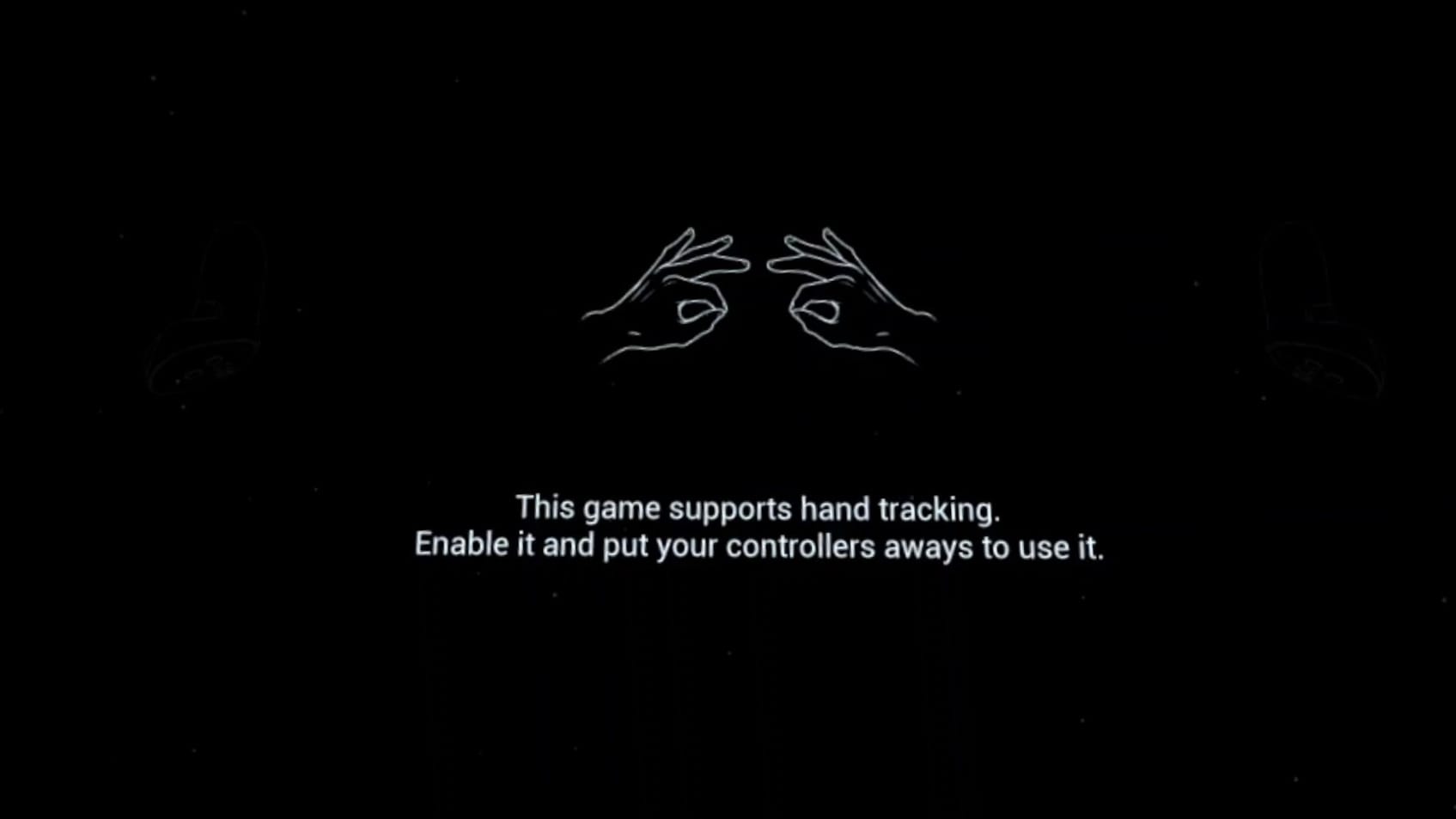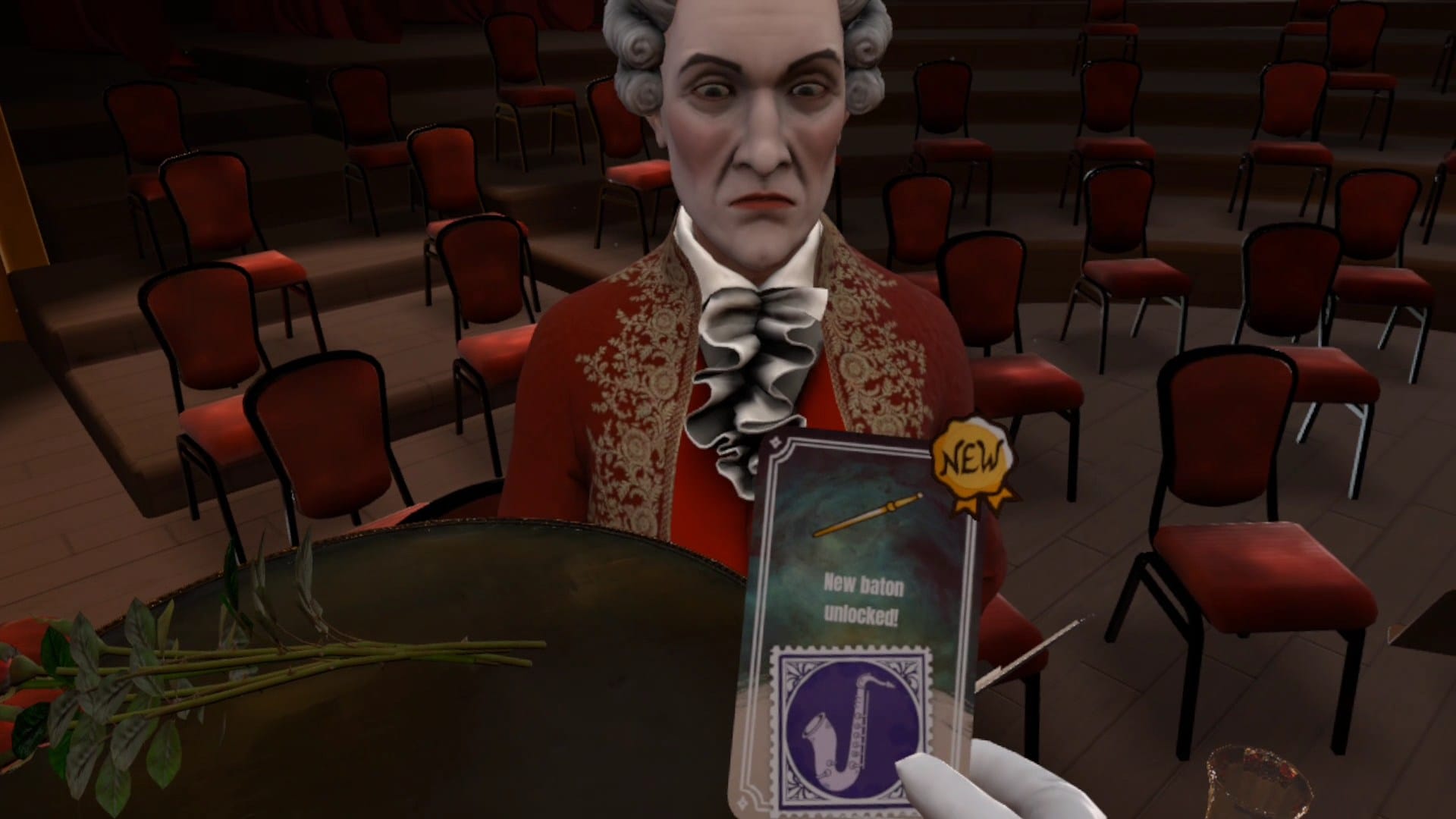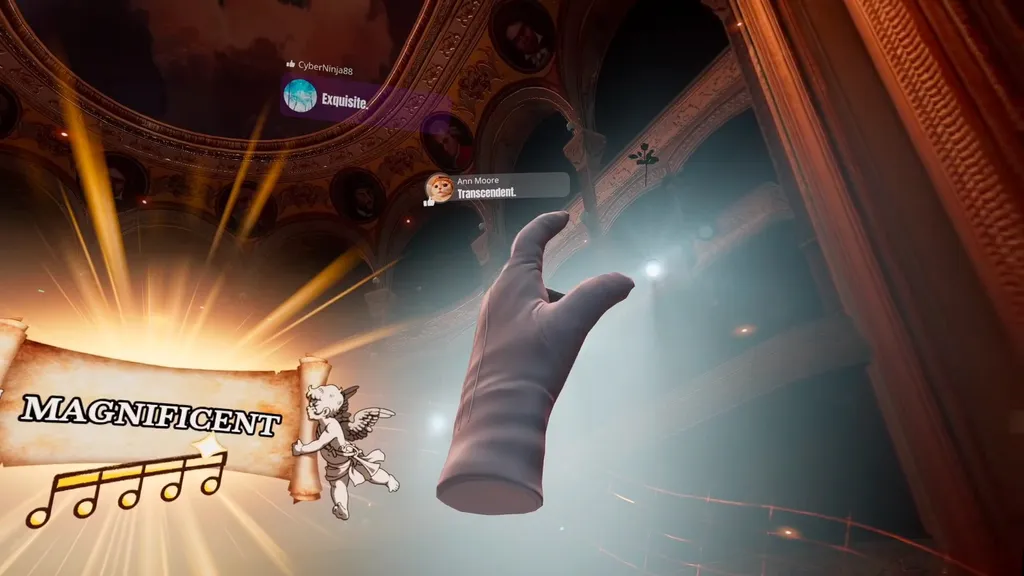Maestro ambitiously redefines VR rhythm gaming by placing you in the role of a conductor focused on actual orchestra management techniques.
At the game's core on Quest is its bold and innovative use of hand-tracking. France-based development studio Double Jack went all in on the input method for Quest headsets, making Maestro into a rhythm game with a heavy focus on hand tracking in standalone. This means they've given players the ability to exchange the satisfying haptic feedback found in other rhythm titles for something quite different – the genuine sense of directing an orchestra by waving your hands.

Simple gestures like raising your palm to trigger crescendos or pointing to different parts of the orchestra, cueing them to activate, replace the more beat-focused approach we've seen in other rhythm games. This feels very natural and was the first time I found myself preferring to play a game like this with hand tracking versus motion controllers.
The Ride Of The Valkyries – Wagner
While hand tracking enhances immersion, the input approach is occasionally hampered by the underlying limits of the Quest system's gestural recognition at high speeds. There are times I really feel like I hit the mark, only to be greeted by the shrieking associated with a missed note. I've spent most of my time on the easy and normal difficulties, so I unfortunately have not completed songs on high difficulty. The biggest difference between these tiers is that, on high, everything is coming at you extremely fast and there is a lot more variation to tasks that need to be done in rapid succession.
Still, at launch the game is already very promising and normal difficulty is plenty of fun on its own. It's worth noting that Beat Saber was tweaked for years to account for timing and speedier movements with controllers on higher difficulties, so there's a chance Double Jack can still work to make this on-ramp better. Overall, Maestro still features some of the tightest hand tracking I've seen yet.
Visually, Double Jack has captured the feeling of being on stage in a large venue very well. I spent some time when I was younger in both traditional and musical theater and Maestro's feeling of stage presence brought me back to those days of performing in front of live audiences. Standing at the podium truly nails that electrifying sense of stage presence and that feeling even developed into stage fright sometimes based on the difficulty of the piece I conducted.
From triumphant cheers to heart-breaking boos, an audience filled with synchronously animated spectators awaits each performance; adding a layer of pressure and excitement. Despite some repetitiveness and the eerie stone-faced gazes from the audience members and musicians, these elements do serve to enrich the on-stage atmosphere, distinguishing Maestro from other rhythm games featuring more abstract environments.
The music selection in Maestro is pleasantly varied and blends classic orchestral pieces with some unexpected jazz and swing. This mix invigorates the gameplay and brings exactly what you would expect based on the game's title.
Maestro’s Official Launch Track list:
The Ride Of The Valkyries – Wagner
Carmina Burana – Orff
Danse Macabre – Saint Saens
From The New World – Dvorak
Messa Da Requiem – Verdi
The Dance Of The Knights – Prokofiev
The Rite Of Spring – Stravinsky
Night On A Bald Mountain – Mussorgsky
Caravan – Ellington
Whiplash – Levy
Sing Sing Sing – Prima
The 5th Symphony – Beethoven
Swan Lake – Tchaikovsky
Figaro’s Wedding – Mozart
The Hebrides – Mendelssohn
It would be nice to have a bit more variety for those who might not be hooked on the classics. And as with almost all rhythm games, the addition of user-provided tracks would be amazing. I found myself imagining conducting some of my personal favorites in Maestro, like John Williams's Star Wars or the score to Wrath of Khan by James Horner.
Sing Sing Sing – Prima
Maestro’s difficulty modes should cater to a wide range of players. Easy and Normal modes guide players with slower-paced and less varied on-screen indicators, ensuring they can focus more on the music and learning timing and orchestra control. Hard mode brings a more frantic pace, adding several layers of variation and requiring quicker hand movements.
Comfort
Maestro accommodates both seated and standing play. Sitting offered practicality where standing was more immersive and made things feel like I was standing in the conductor’s box. Since the game does require some physical rotation while conducting different zones of the orchestra or turning to face the audience to end each performance, a swivel chair is recommended for seated players. For conductors who play from a couch or other non-swivel type chair, then, it may be a little more challenging to play than while standing.
Progression is incentivized through unlockable content like gloves, costumes for the orchestra, wands and even new backdrops to perform against. Maestro also features a competitive side through the inclusion of a leaderboard system, keeping Maestro up to speed with many other games in the VR rhythm space.

Maestro Review - Final Verdict
Double Jack's bold choice to make a rhythm game focused around hand tracking succeeds with style. Maestro is a breath of fresh air compared to every other VR rhythm game I’ve played over the years. While I lose interest in most rhythm games quickly, I can't stop playing Maestro, and there's a lot of room for growth from here.

UploadVR uses a 5-Star rating system for our game reviews – you can read a breakdown of each star rating in our review guidelines.


























